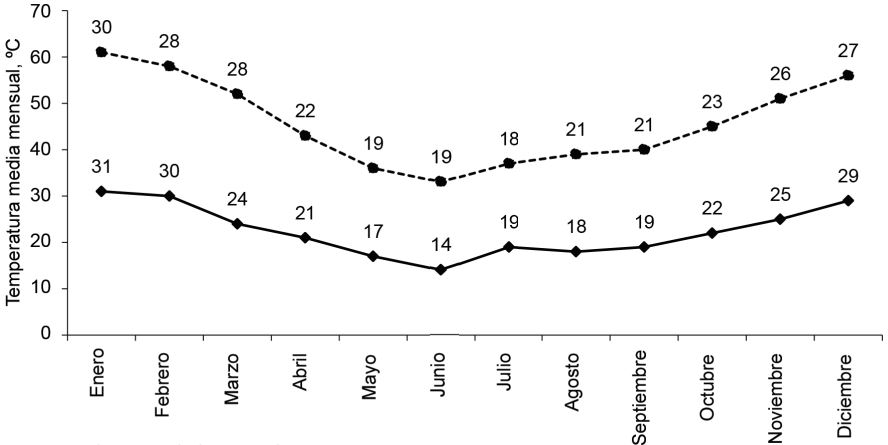Yield and nutritional value of ten varieties of Saccharum officinarum L. grown in Argentina
Keywords:
biomass, forage, yieldAbstract
Objective: To evaluate the yield and nutritional value of Saccharum officinarum L. varieties in Corrientes, Argentina.
Materials and Methods: Ten varieties of S. officinarum were evaluated at the Experimental Teaching Field of the School of Agricultural Sciences of the Northeast National University, in Corrientes. Several variables were analyzed: number of tillers and mature stems per linear meter, height and average individual weight of mature stems, radiation intercepted by the crop, ripening coefficient and nutrient content in the varieties. A complete randomized design was applied and analysis of variance and multiple comparison of means test (Tukey) were performed when there were significant differences among varieties. The statistical package InfoStat® was used.
Results: No differences in yield were observed among the evaluated varieties. The average green biomass yield was 52 370 kg ha-1 and reached exceptional values up to 130 000 kg ha-1. The average dry biomass yield was 17 700 kg ha-1 and showed no differences between varieties. It reached average values of 32 000 kg ha-1 associated with the varieties FAM 05-662 and FAM 05-691. Nutritionally, there were no differences among varieties, except for crude protein and phosphorus contents. In vitro digestibility indices averaged 70,6 %, with total digestible nutrients of 78,0 % and digestible energy of 3,45 Mcal/kg dry matter.
Conclusions: The varieties that showed promise for yields were FAM 05-662 and FAM 05-691. In addition, the latter had a high CP content (2,9 %). On average, digestibility was 70,6 %, total digestible nutrients 78,0 % and digestible energy 3,45 Mcal/kg dry matter. S. officinarum can be a viable option to improve animal production in the region, provided that the appropriate varieties are used.





